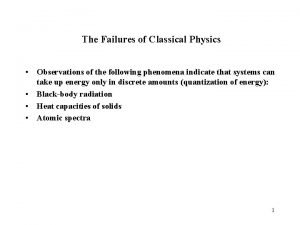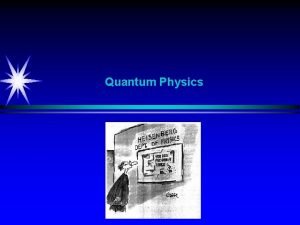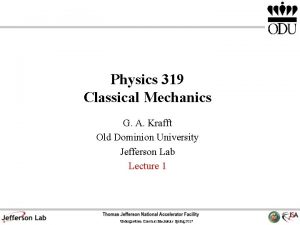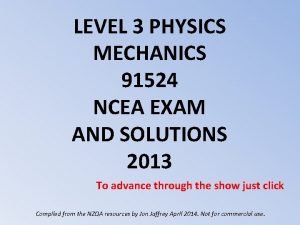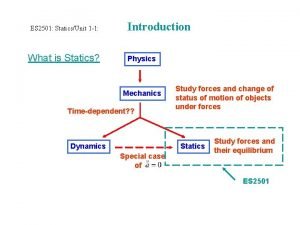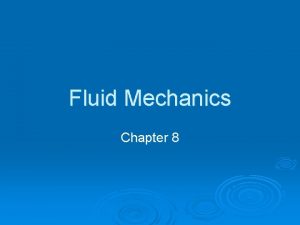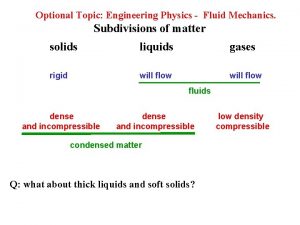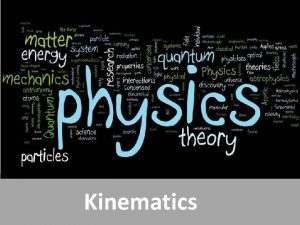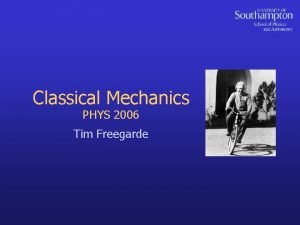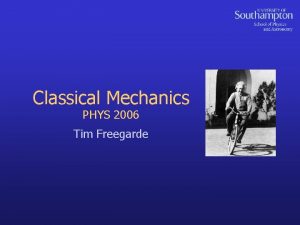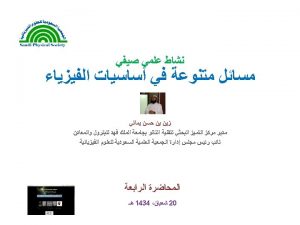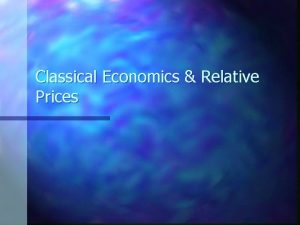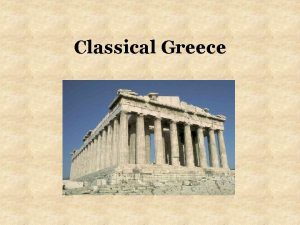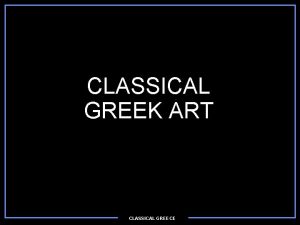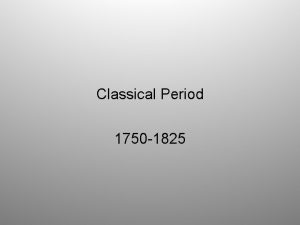Mechanics Classical Mechanics Mechanics Classical Mechanics Classical Physics












- Slides: 12

Mechanics: “Classical” Mechanics

Mechanics: “Classical” Mechanics • “Classical” Physics: “Classical” Before the 20 th Century The foundation of pure & applied macroscopic physics & engineering! – Newton’s Laws + Boltzmann’s Statistical Mechanics (& Thermodynamics): Describe most of macroscopic world! – However, at high speeds (v ~ c) we need Special Relativity: (Early 20 th Century: 1905) Ch. 14 of M&T – Also, for small sizes (atomic & smaller) we need Quantum Mechanics: (1900 through ~ 1930) Physics 4307! “Classical” Mechanics: (17 th & 18 th Centuries) Still useful today!

Mechanics • The science of HOW objects move (behave) under given forces. • (Usually) Does not deal with the sources of forces. Answers the question: “Given the forces, how do objects move”? • Forces are classified into four types: Four Fundamental Forces Of Nature! – Mechanics (in some form) applies to all four!

The 4 Fundamental Forces of Nature The Sources of these forces: In order of decreasing strength • Strong Nuclear Force: – Binds nuclei together. Still being researched. • Electromagnetic Force: – E&M phenomena. Chemical forces. Most everyday forces. Maxwell, Coulomb, Ampere, Faraday, . . . • Weak Nuclear Force: – Nuclear decay. Fermi, Bethe & others. Still being researched. • Gravitational Force: – Newton (“classical” mechanics) – Einstein (general relativity)

The 4 Fundamental Forces of Nature The Sources of these forces: In order of decreasing strength

The 4 Fundamental Forces of Nature “Electro-Weak” Force – Since ~ the late 1960’s, in some sense have reduced the 4 fundamental forces to 3! – The Electromagnetic Force & the Weak Nuclear Force were combined into one theory. – S. Weinberg & A. Salaam: The 1972 Nobel Prize in Physics!

The Standard Model of Particle Physics The “Periodic Table for Elementary Particles”! Quantum Chromodynamics (QCD) and the Electroweak Theory Protons & Neutrons consist of 3 Quarks each.

Standard Model

Standard Model

Standard Model


The Rest of Physics! • What we’ve mentioned is all of physics except: • Statistical Mechanics: (Physics 4302) – The mechanics of systems with huge numbers of particles (>> ~ 1023). – Uses probability & statistics methods to calculate the macroscopic properties of a system from the microscopic force laws between the particles. – The major LINK between microscopic & macroscopic physics! – Contains Thermodynamics as a sub-theory!
 Why does it happen
Why does it happen University physics with modern physics fifteenth edition
University physics with modern physics fifteenth edition Ib physics ia samples
Ib physics ia samples Failures of classical physics
Failures of classical physics Origin of quantum mechanics
Origin of quantum mechanics Classical physics
Classical physics Classical physics
Classical physics Ncea level 3 mechanics 2017 answers
Ncea level 3 mechanics 2017 answers Physics mechanics
Physics mechanics Quantum physics vs mechanics
Quantum physics vs mechanics Buoyancy force in fluid mechanics
Buoyancy force in fluid mechanics Ap physics quantum mechanics
Ap physics quantum mechanics Physics mechanics
Physics mechanics



